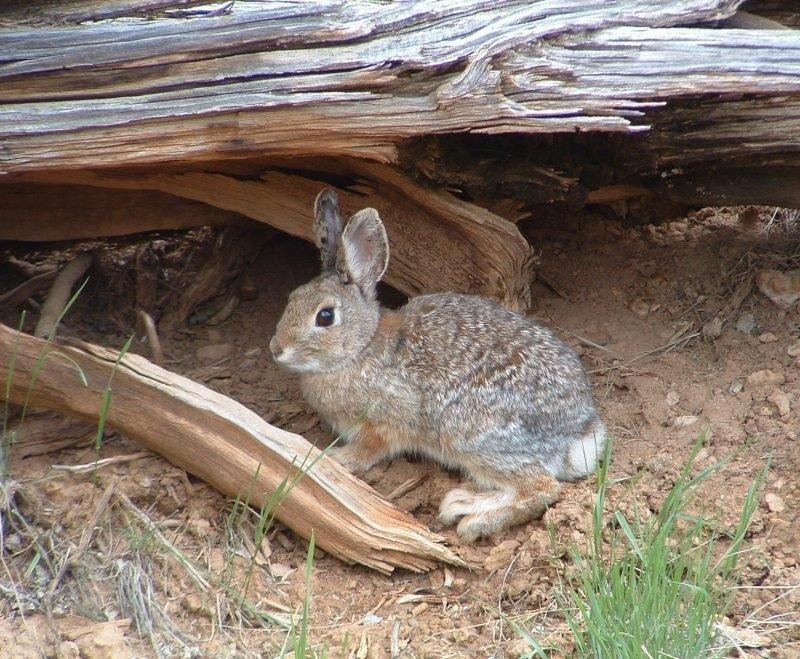Wildlife News Release
Rabbit population nearing bottom of 10-year cycle
Cottontail rabbits have done really well in Utah over the past few years. It was only a matter of time, though, before the ups and downs of a 10-year population cycle caught up to them.
This year, there are about half as many rabbits in Utah as there was in 2017. And the current number is a tenth of what it was when the population experienced its latest peak in 2015.
Fewer rabbits doesn’t mean you shouldn’t head afield and hunt them, though. Jason Robinson, upland game coordinator for the Division of Wildlife Resources, said there are still plenty of rabbits in Utah. “You’ll likely have to walk farther and cover more ground to find them,” he said, “but they’re there.”
Robinson said the cottontail rabbit hunt is a great hunt for hunters of all ages and abilities, including those who are just getting started. “The terrain rabbits live in is usually relatively flat and easy to walk through,” he said. “The equipment needed is basic, light and easy to carry. And—if you do get into a bunch of rabbits—you’ll get lots of shots.”
You can see where rabbits live in Utah, and learn more about them, on pages 38 and 48 of the 2018 – 2019 Utah Upland Game Guidebook. The free guidebook is available at www.wildlife.utah.gov/guidebooks
Four counties have the highest numbers
Biologists aren’t sure why it occurs, but cottontail rabbits across the country experience a 10-year population cycle. After bottoming out, the number of cottontails will climb slowly for about five years. Once the population peaks in number, it will usually stay close to the peak for about three years. Then, numbers will abruptly fall for a couple of years until the population bottoms out and numbers start to climb again.
From late July through mid-August, DWR biologists count rabbits along 15 survey routes in the state. Based on what the biologists saw, four counties—Duchesne and Uintah in northeastern Utah, and Emery and Iron in southern Utah—are the areas with the highest number of rabbits this year.
“Rabbit numbers were best in those four counties,” Robinson said. “With the exception of Iron County—where rabbits are doing well—the western half of Utah was the area where biologists saw the fewest rabbits.”
Utah’s cottontail rabbit hunt runs until Feb. 28, 2019.
Finding rabbits
To find rabbits in lower elevations, look in the bottom of valleys that have tall sagebrush and deep, loose soil that have burrows the rabbits can hide in. If you’re in mid-elevation areas, look for hillsides that have large boulders, thick sagebrush or other thick vegetation in which the rabbits can hide.
Also, consider hunting early in the morning and late in the afternoon. “That’s when rabbits are away from their resting areas and are the most active,” Robinson said. “Early morning and late in the afternoon are prime times for rabbits to feed.”
Hunting tips
Shotguns and small-caliber rifles, such as the .22, are perfect firearms to hunt rabbits with.
If you’re hunting with a small-caliber rifle, finding a spot that’s higher in elevation than the area around it—and then sitting down, scanning the surrounding area and waiting for rabbits to appear—is a good choice. It’s critical to hunt early in the morning or late in the afternoon, when rabbits are the most active and moving around.
If you’d like to walk and flush rabbits out of cover, a shotgun is the best firearm to use. If you’re hunting with one or more people, form a line—spacing each hunter about 20 yards apart—and then walk through areas that look promising. Be ready to click your safety off: a flushing rabbit doesn’t give you much time to shoot!


